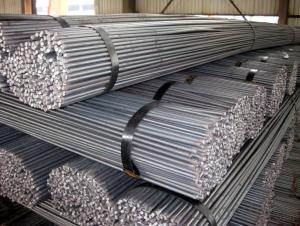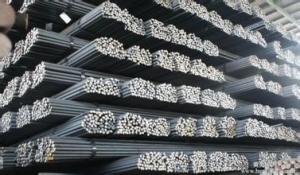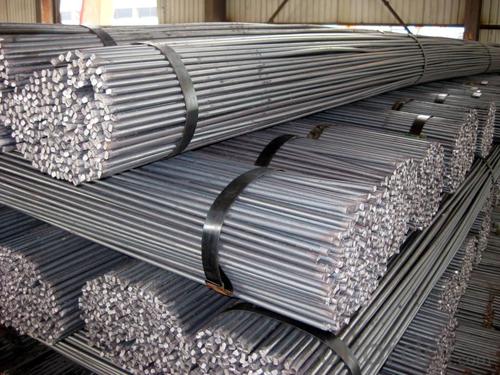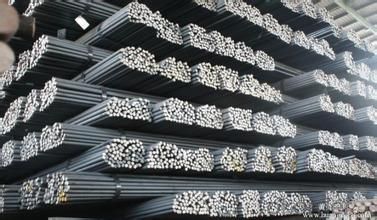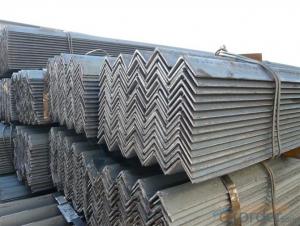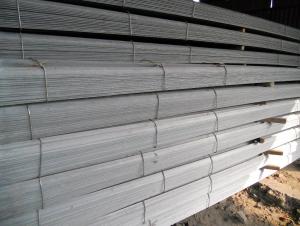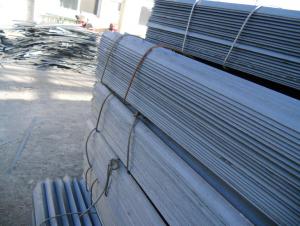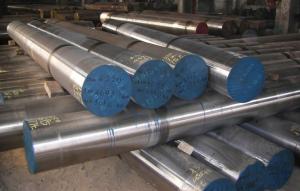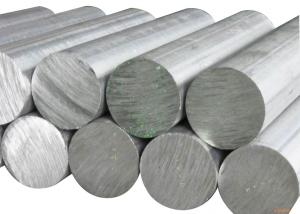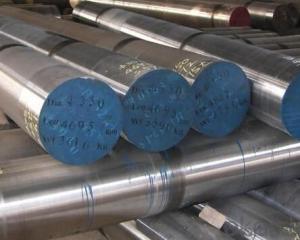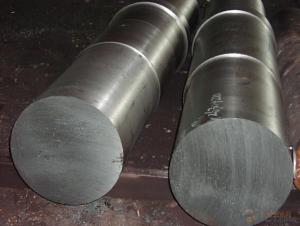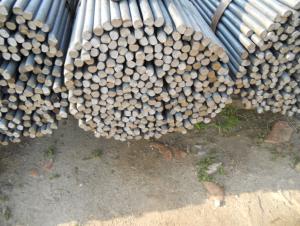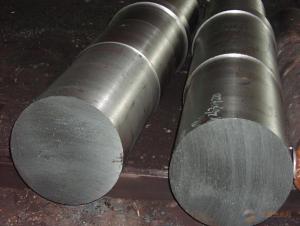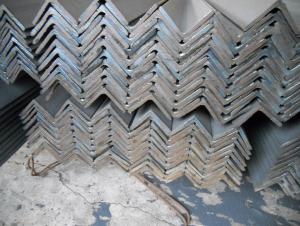Steel Round Bar For Bearing
- Loading Port:
- China Main Port
- Payment Terms:
- TT or LC
- Min Order Qty:
- -
- Supply Capability:
- -
OKorder Service Pledge
OKorder Financial Service
You Might Also Like
Product Description:
OKorder is offering Steel Round Bar For Bearing at great prices with worldwide shipping. Our supplier is a world-class manufacturer of steel, with our products utilized the world over. OKorder annually supplies products to European, North American and Asian markets. We provide quotations within 24 hours of receiving an inquiry and guarantee competitive prices.
Product Applications:
Steel Round Bar For Bearing are ideal for structural applications and are widely used in the construction of buildings and bridges, and the manufacturing, petrochemical, and transportation industries.
Product Advantages:
OKorder's Steel Round Bar For Bearing are durable, strong, and resist corrosion.
Main Product Features:
· Premium quality
· Prompt delivery & seaworthy packing (30 days after receiving deposit)
· Corrosion resistance
· Can be recycled and reused
· Mill test certification
· Professional Service
· Competitive pricing
Product Specifications:
Manufacture: Hot rolled
Grade: Q195 – 235
Certificates: ISO, SGS, BV, CIQ
Length: 6m – 12m, as per customer request
Packaging: Export packing, nude packing, bundled
Chinese Standard (H*W*T) | Weight (Kg/m) | 6m (pcs/ton) | Light I (H*W*T) | Weight (Kg/m) | 6m (pcs/ton) | Light II (H*W*T) | Weight (Kg/m) | 6M |
100*68*4.5 | 11.261 | 14.8 | 100*66*4.3 | 10.13 | 16.4 | 100*64*4 | 8.45 | 19.7 |
120*74*5.0 | 13.987 | 11.9 | 120*72*4.8 | 12.59 | 13.2 | 120*70*4.5 | 10.49 | 15.8 |
140*80*5.5 | 16.89 | 9.8 | 140*78*5.3 | 15.2 | 10.9 | 140*76*5 | 12.67 | 13.1 |
160*88*6 | 20.513 | 8.1 | 160*86*5.8 | 18.46 | 9 | 160*84*5.5 | 15.38 | 10.8 |
180*94*6.5 | 24.143 | 6.9 | 180*92*6.3 | 21.73 | 7.6 | 180*90*6 | 18.11 | 9.2 |
200*100*7 | 27.929 | 5.9 | 200*98*6.8 | 25.14 | 6.6 | 200*96*6.5 | 20.95 | 7.9 |
220*110*7.5 | 33.07 | 5 | 220*108*7.3 | 29.76 | 5.6 | 220*106*7 | 24.8 | 6.7 |
250*116*8 | 38.105 | 4.3 | 250*114*7.8 | 34.29 | 4.8 | 250*112*7.5 | 28.58 | 5.8 |
280*122*8.5 | 43.492 | 3.8 | 280*120*8.2 | 39.14 | 4.2 | 280*120*8 | 36.97 | 4.5 |
300*126*9 | 48.084 | 3.4 | 300*124*9.2 | 43.28 | 3.8 | 300*124*8.5 | 40.87 | 4 |
320*130*9.5 | 52.717 | 3.1 | 320*127*9.2 | 48.5 | 3.4 | |||
360*136*10 | 60.037 | 2.7 | 360*132*9.5 | 55.23 | 3 |
FAQ:
Q1: Why buy Materials & Equipment from OKorder.com?
A1: All products offered byOKorder.com are carefully selected from China's most reliable manufacturing enterprises. Through its ISO certifications, OKorder.com adheres to the highest standards and a commitment to supply chain safety and customer satisfaction.
Q2: How do we guarantee the quality of our products?
A2: We have established an advanced quality management system which conducts strict quality tests at every step, from raw materials to the final product. At the same time, we provide extensive follow-up service assurances as required.
Q3: How soon can we receive the product after purchase?
A3: Within three days of placing an order, we will begin production. The specific shipping date is dependent upon international and government factors, but is typically 7 to 10 workdays.
Q4: What makes stainless steel stainless?
A4: Stainless steel must contain at least 10.5 % chromium. It is this element that reacts with the oxygen in the air to form a complex chrome-oxide surface layer that is invisible but strong enough to prevent further oxygen from "staining" (rusting) the surface. Higher levels of chromium and the addition of other alloying elements such as nickel and molybdenum enhance this surface layer and improve the corrosion resistance of the stainless material.
Q5: Can stainless steel rust?
A5: Stainless does not "rust" as you think of regular steel rusting with a red oxide on the surface that flakes off. If you see red rust it is probably due to some iron particles that have contaminated the surface of the stainless steel and it is these iron particles that are rusting. Look at the source of the rusting and see if you can remove it from the surface.
Images:
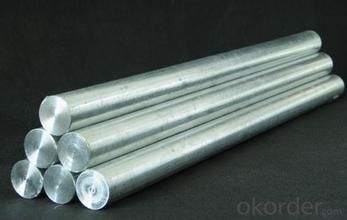
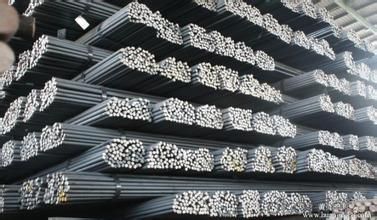
- Q: How do you prevent corrosion between steel angles and other materials?
- There are several effective measures that can be taken to prevent corrosion between steel angles and other materials: 1. To create a barrier between the steel and surrounding materials, protective coatings such as paint, epoxy, or galvanization can be applied. This prevents direct contact and reduces the risk of corrosion. 2. Insulating materials like rubber or plastic pads or sleeves can be used to separate the steel angles from other materials. This prevents direct contact and minimizes the chances of corrosion. 3. A cathodic protection mechanism can be established by installing sacrificial anodes or using impressed current systems. This creates an electrical current that counteracts the corrosion process, protecting the steel angles. 4. Regular inspection and maintenance of the steel angles are crucial to promptly identify any signs of corrosion and take appropriate actions. This includes cleaning the surfaces, repairing damaged coatings, and replacing corroded parts. 5. Proper drainage is essential to prevent moisture accumulation around the steel angles, which can accelerate corrosion. Designing and installing drainage systems correctly can prevent water or corrosive substances from pooling around the steel angles. 6. If the steel angles are exposed to chemicals or corrosive substances, it is important to choose materials that are resistant to corrosion. This may involve using stainless steel or other corrosion-resistant alloys to withstand exposure to specific chemicals. By implementing a combination of protective coatings, insulation, cathodic protection, regular maintenance, proper drainage, and material selection, corrosion between steel angles and other materials can be effectively prevented. This ensures the longevity and structural integrity of the steel angles.
- Q: How do you cut steel angles to size?
- To cut steel angles to size, there are several methods you can use depending on the tools available to you. Here are a few common approaches: 1. Using an Angle Grinder: An angle grinder is a versatile tool that can be used to cut steel angles. Ensure you have a cutting disc suitable for metal cutting attached to the grinder. Measure and mark the desired length on the angle, then securely clamp it down. Using the grinder, carefully follow the marked line, applying even pressure to cut through the steel. Take necessary safety precautions, such as wearing protective eyewear and gloves, and be aware of any sparks produced during the cutting process. 2. Utilizing a Bandsaw: If you have access to a bandsaw, it can be an efficient tool for cutting steel angles. Ensure the bandsaw is equipped with a blade specifically designed for metal cutting. Securely clamp the angle, aligning the marked line with the blade's path. Start the bandsaw and slowly feed the angle into the blade, maintaining a steady pace to achieve a clean cut. 3. Using a Hacksaw: Although it may be a slower process, a hacksaw can also be used to cut steel angles. First, securely clamp the angle to a workbench or vise. Use a square to mark a straight cutting line on the angle, then carefully saw along the line. Apply steady pressure while sawing to maintain control and achieve a clean cut. Remember to use a blade suitable for cutting metal and take breaks if needed to avoid fatigue. Regardless of the method you choose, it is crucial to take safety precautions, such as wearing appropriate protective gear and ensuring the work area is clear and well-ventilated. Additionally, always double-check measurements and use proper techniques to achieve accurate cuts.
- Q: Can steel angles be used for pedestrian bridges or walkways?
- Yes, steel angles can be used for pedestrian bridges or walkways. Steel angles are commonly used in construction due to their strength, durability, and versatility. They can be easily fabricated and welded to create the desired structural elements for bridges and walkways. Steel angles provide excellent load-bearing capabilities, making them suitable for supporting pedestrian traffic. Additionally, the corrosion-resistant properties of steel make it an ideal choice for outdoor applications where exposure to weather elements is a concern. Overall, steel angles are a popular choice for pedestrian bridges and walkways due to their reliability and ability to meet the necessary structural requirements.
- Q: Are there any limitations or restrictions on the use of steel angles?
- Yes, there are some limitations and restrictions on the use of steel angles. One limitation is the maximum load capacity they can bear. Steel angles have a specific load-bearing capacity based on their size, shape, and material composition. Exceeding this capacity can lead to structural failure or collapse. Another limitation is related to the angle's installation and fixing methods. Steel angles are typically secured using welding, bolting, or other fastening techniques. The strength and effectiveness of these methods can be influenced by factors such as the quality of the weld or the type of fastener used. It is important to follow proper installation procedures and adhere to recommended guidelines to ensure the angles are securely attached. Furthermore, steel angles may have restrictions on their use in certain environments or applications. For example, steel angles may not be suitable for use in highly corrosive environments without appropriate protective coatings or materials. Similarly, in applications where fire resistance is crucial, steel angles may need to be treated with fire-resistant coatings or replaced with other fire-resistant materials. Additionally, the dimensions and lengths of steel angles can impose limitations on their use. Steel angles are available in various sizes and lengths, and these dimensions should be selected carefully to meet the specific requirements of a project. It is important to consider factors such as the load distribution, span length, and overall structural design to ensure the chosen steel angles are appropriate for the intended application. In summary, while steel angles are versatile and widely used in various construction and engineering applications, there are limitations and restrictions to be aware of. These include load-bearing capacity, installation methods, environmental considerations, and dimensional constraints. It is essential to consult with structural engineers, follow industry standards, and ensure proper planning and implementation to ensure the safe and effective use of steel angles.
- Q: Can steel angles be used for reinforcement in concrete structures?
- Yes, steel angles can be used for reinforcement in concrete structures. Steel angles, also known as L-shaped steel profiles, are commonly used as reinforcing bars in concrete construction. They provide increased strength and stability to the concrete structure, especially in areas where additional support is needed. Steel angles are typically placed within the concrete forms, ensuring proper alignment and spacing, and then embedded in the concrete during the pouring process. This reinforcement helps to prevent cracking and enhance the overall structural integrity of the concrete structure. Steel angles are versatile and can be used in various concrete applications, such as beams, columns, walls, and slabs.
- Q: Can steel angles be used in seismic or earthquake-resistant construction?
- Yes, steel angles can be used in seismic or earthquake-resistant construction. Steel angles have high strength and ductility, making them suitable for withstanding seismic forces. They can be used to reinforce structural members, provide bracing, or create moment-resisting connections, enhancing the overall seismic performance of a building.
- Q: What are the different types of connections used for steel angles in educational institutions?
- There are several types of connections commonly used for steel angles in educational institutions. These include bolted connections, welded connections, and clip angles. Bolted connections involve using bolts and nuts to secure the steel angles together. Welded connections, on the other hand, involve fusing the steel angles together using heat. Clip angles are small pieces of steel that are used to connect and reinforce the steel angles. Each type of connection has its own advantages and disadvantages, and the choice depends on factors such as the load requirements, cost, and construction method.
- Q: Can steel angles be used for shelving?
- Yes, steel angles can be used for shelving. Steel angles are commonly used in shelving systems as they provide strength, stability, and durability. They can be easily mounted on walls or used as supports for shelves, making them ideal for various storage applications.
- Q: What are the different finishes available for steel angles?
- There are several different finishes available for steel angles, including hot-dip galvanized, mill finish, painted, and powder coated.
- Q: What are the different types of connections used for steel angles in architectural applications?
- There are several types of connections used for steel angles in architectural applications. Some common types include bolted connections, welded connections, and riveted connections. Bolted connections involve using bolts to secure the steel angles together, while welded connections involve fusing the steel angles using heat. Riveted connections, on the other hand, involve using rivets to connect the steel angles together. Each type of connection has its own advantages and disadvantages, and the choice depends on factors such as the load requirements, aesthetics, and ease of construction.
Send your message to us
Steel Round Bar For Bearing
- Loading Port:
- China Main Port
- Payment Terms:
- TT or LC
- Min Order Qty:
- -
- Supply Capability:
- -
OKorder Service Pledge
OKorder Financial Service
Similar products
Hot products
Hot Searches
Related keywords
